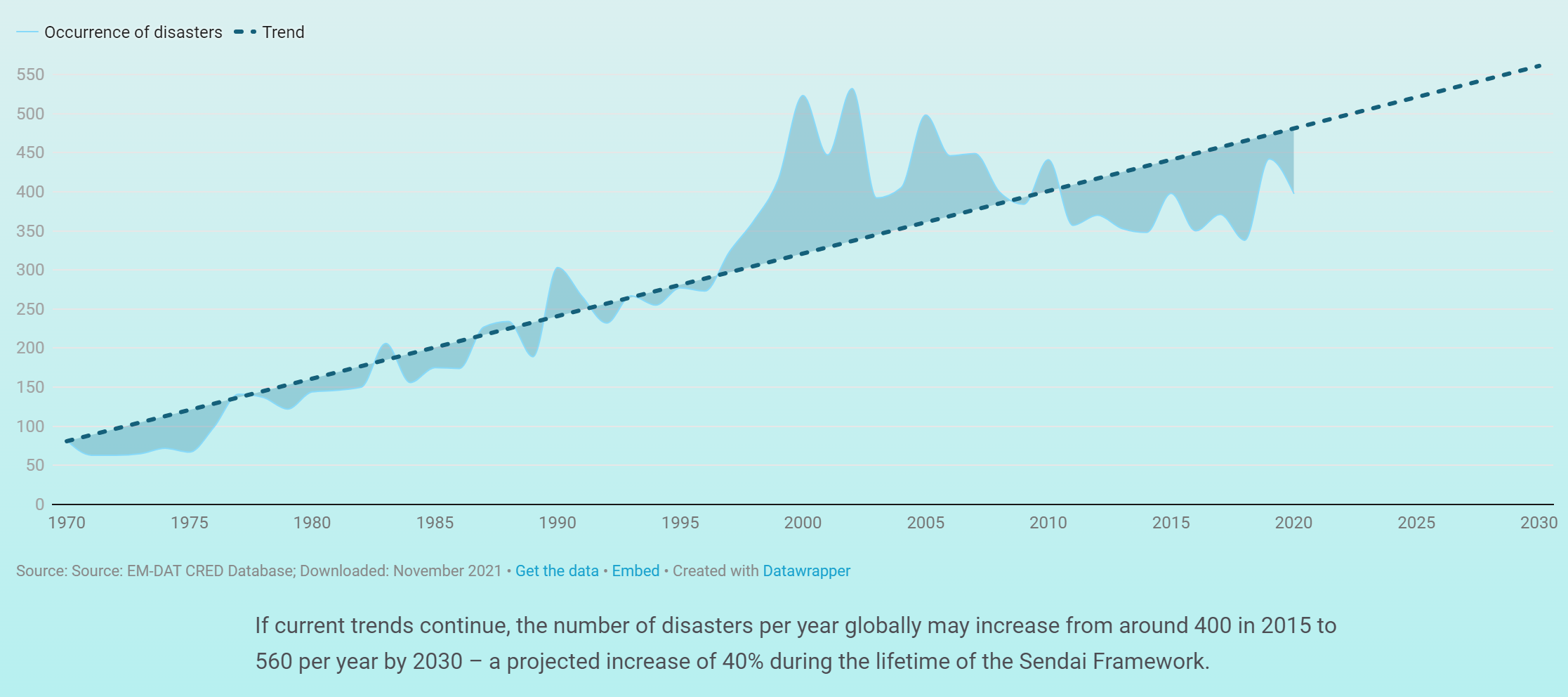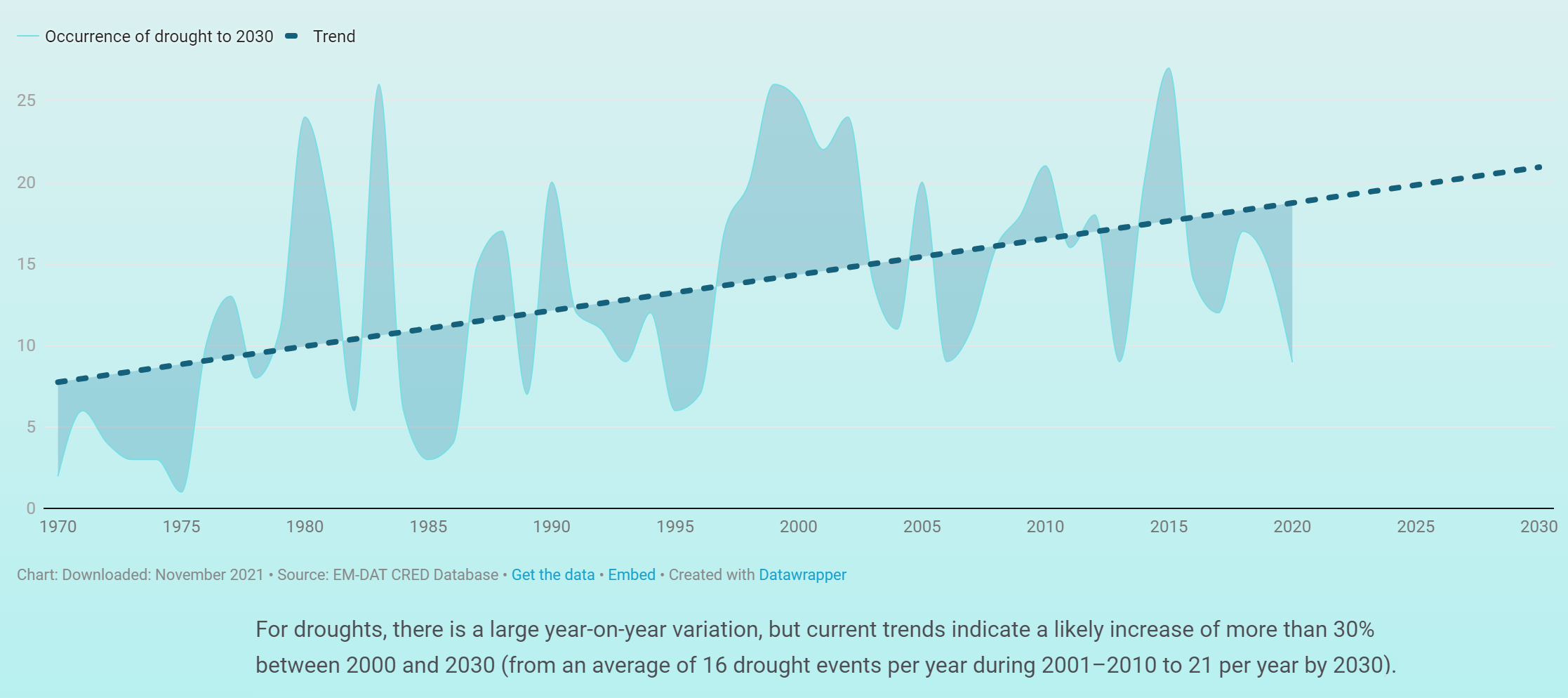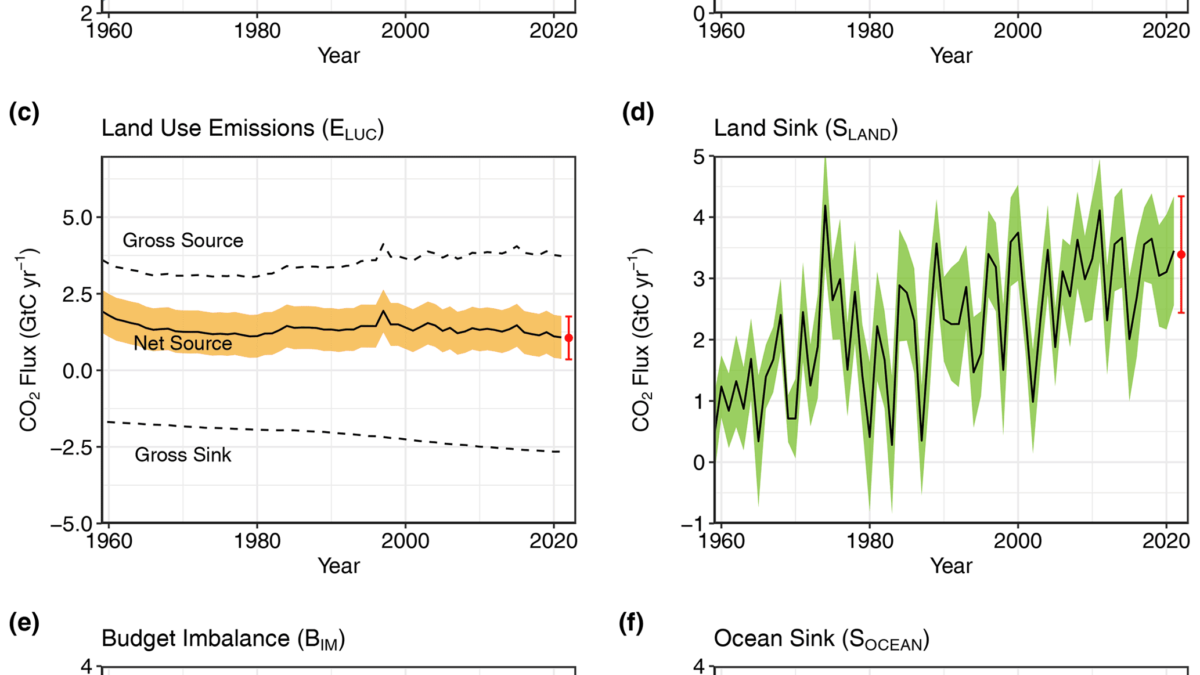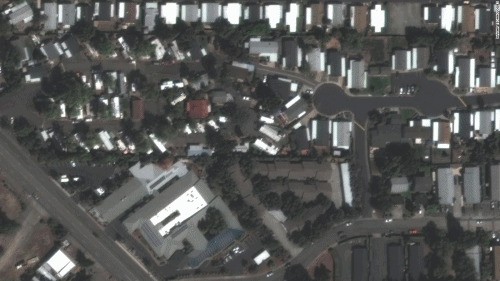Humanity entering “spiral of self-destruction”, UN warns – “By deliberately ignoring risk and failing to integrate it in decision making, the world is effectively bankrolling its own destruction”

26 April 2022 (France 24) – Humanity is suffering from a “broken perception of risk”, spurring us into activities and behaviours that cause climate change and a surging number of disasters around the globe, the UN warned Tuesday.
In a fresh report, the UN Office for Disaster Risk Reduction, or UNDRR, found that between 350 and 500 medium- to large-scale disasters took place globally every year over the past two decades.
That is five times more than the average during the three preceding decades, it said.
And amid the changing climate, disastrous events brought on by drought, extreme temperatures and devastating flooding are expected to occur even more frequently going forward.
The report estimated that by 2030, we will be experiencing 560 disasters around the world every year – or 1.5 disasters every day on average.
UNDRR said in a statement that the sharp rise in disasters globally could be attributed to a “broken perception of risk based on optimism, underestimation and invincibility”.
This, it said, had led to policy, finance and development decisions that exacerbate vulnerabilities and put people in danger.
Ignoring the towering risks we face “is setting humanity on a spiral of self-destruction”, UN Deputy Secretary-General Amina Mohammed warned in the statement.
“Raising the alarm by speaking the truth is not only necessary but crucial,” added UNDRR head Mami Mizutori.
“The science is clear. It is less costly to take action before a disaster devastates than to wait until destruction is done and respond after it has happened,” she told the Thomson Reuters Foundation.
The UN-backed Intergovernmental Panel on Climate Change warned this year that climate change impacts, from heat to drought and flooding, are set to become more frequent and intense, damaging nature, people and the places they live.
But measures to slash planet-heating emissions and adapt to global warming are both lagging, the panel said.

Wait now, pay later
Ignoring risks has come at a high price.
Disasters around the world have cost roughly $170 billion each year over the past decade, the report found.
But most of that is incurred in lower-income countries, which on average lose 1 percent of their national GDP to disasters each year, compared to just 0.1 to 0.2 percent in wealthier nations.
Asia-Pacific nations are worst hit, with a 1.6 percent annual GDP dent, said the report, published ahead of a global disaster forum on the Indonesian island of Bali next month.
In the Philippines, for example, millions of people are still recovering from Typhoon Rai which struck in December, killing over 300 people and leaving hundreds of thousands more displaced, along with about $500 million in damages.
And as the number of disasters increases, the costs will as well.
The report estimated that 37.6 million more people will be living in conditions of extreme poverty by 2030 due to the impacts of climate change and disasters.
Most disaster-related losses are meanwhile not covered by insurers.
Since 1980, only about 40 percent have been covered globally, but in developing countries less than 10 percent of such losses had insurance coverage.
“Disasters can be prevented, but only if countries invest the time and resources to understand and reduce their risks,” Mizutori stressed in the statement.
However, she warned, “by deliberately ignoring risk and failing to integrate it in decision making, the world is effectively bankrolling its own destruction”.




